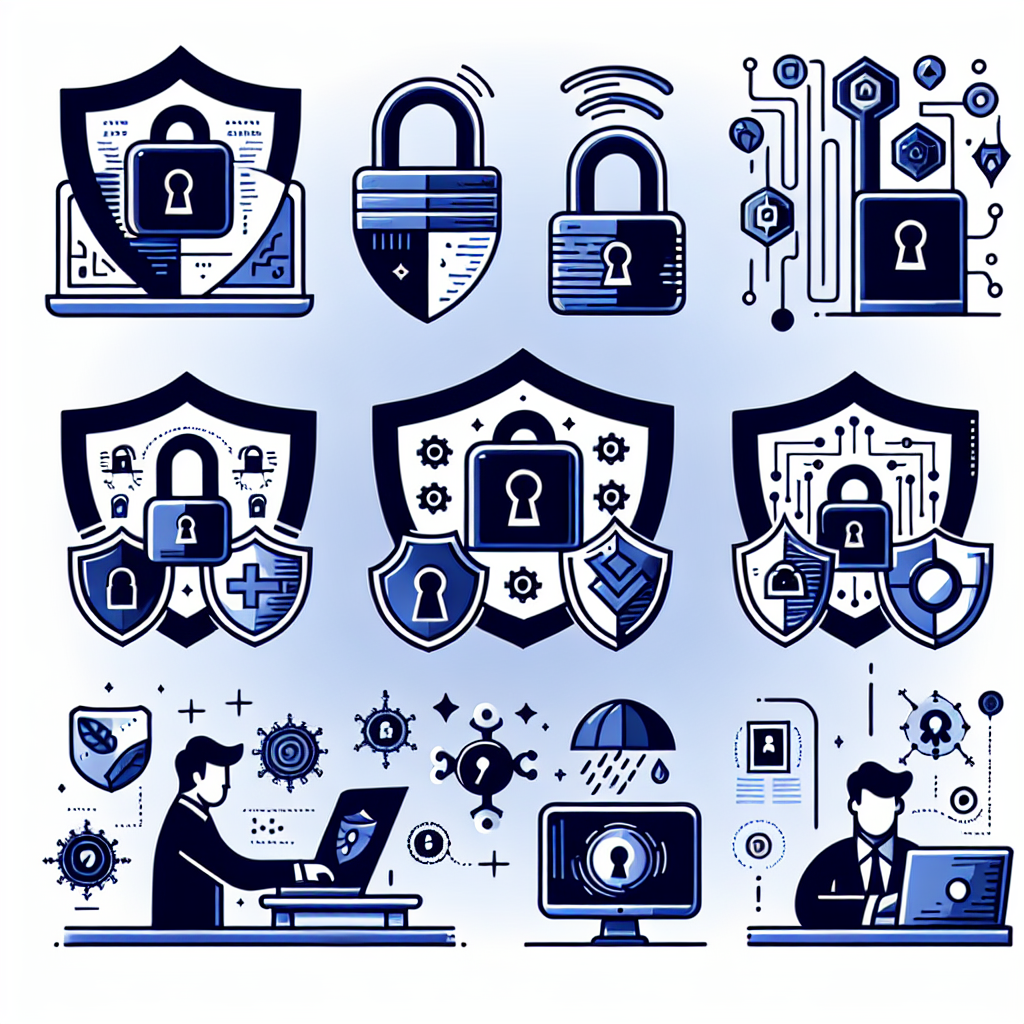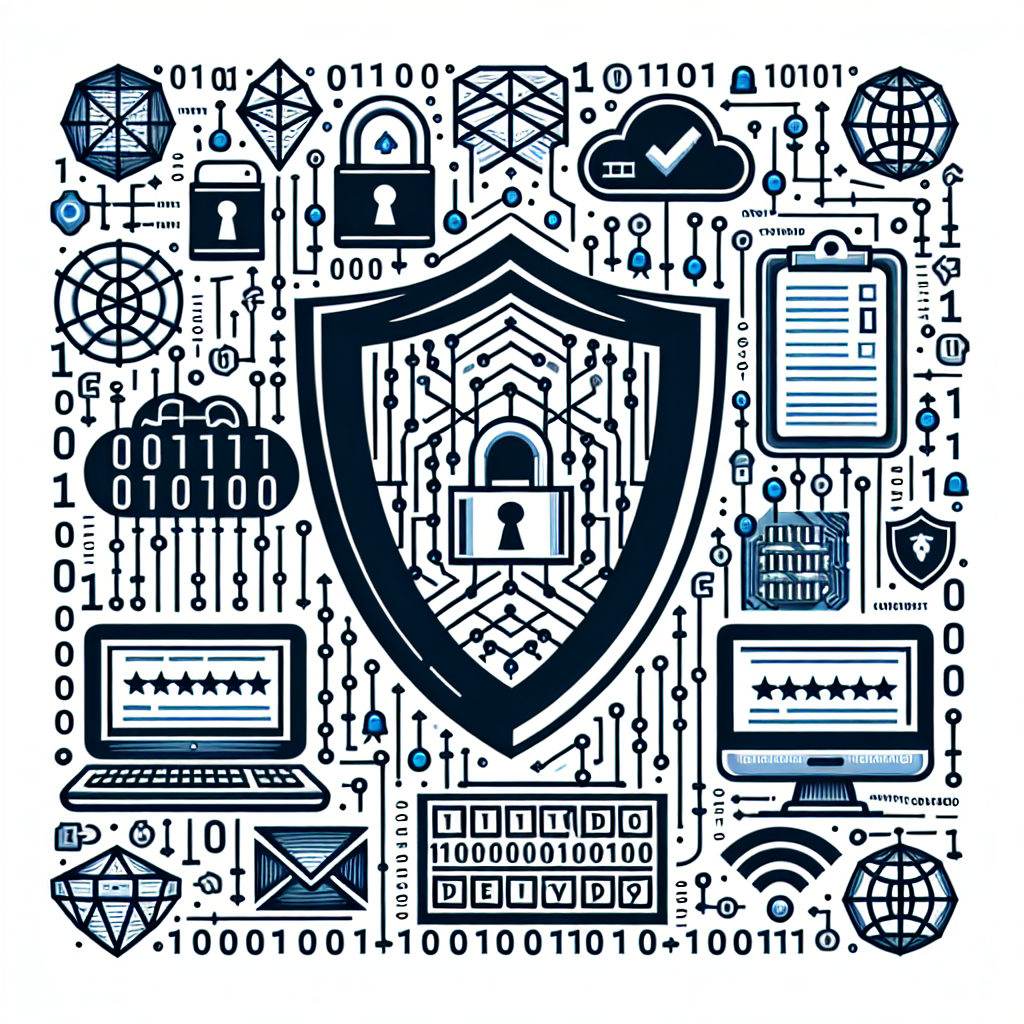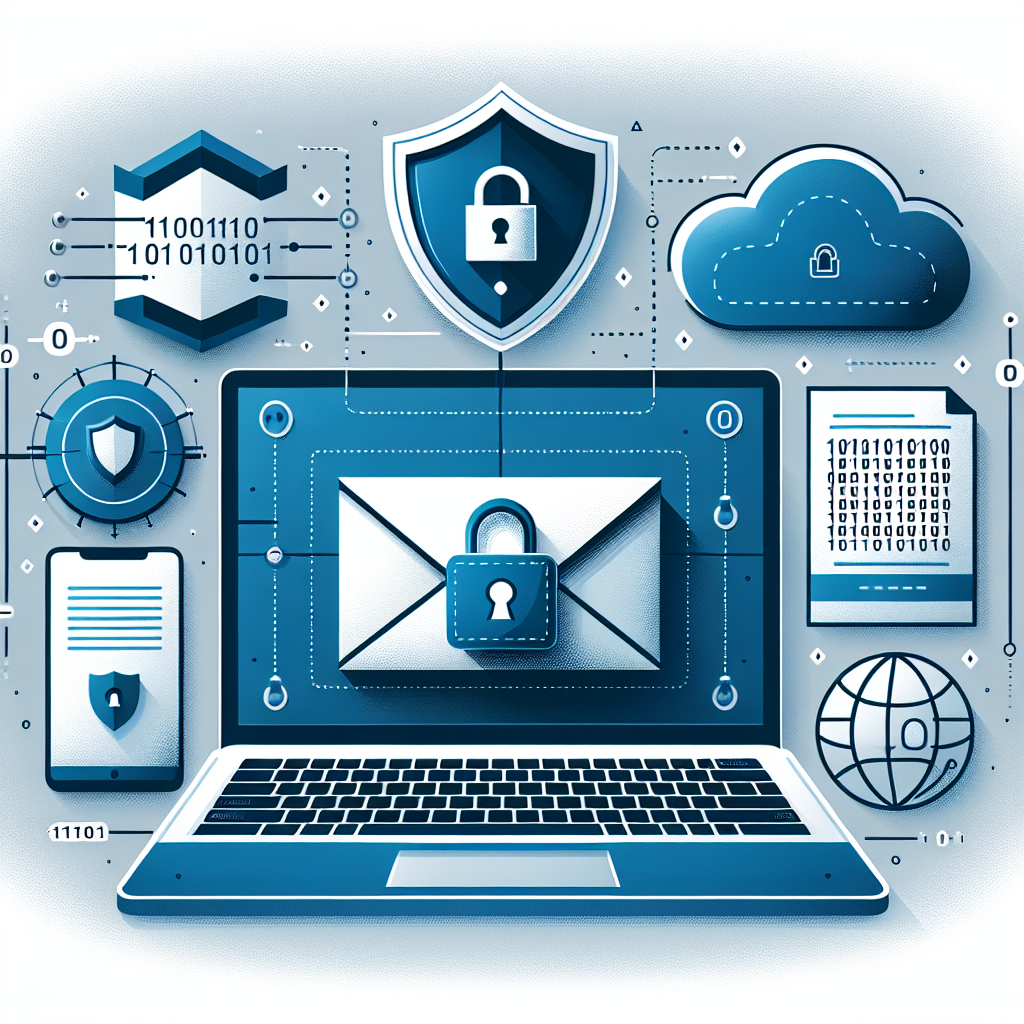Your cart is currently empty!
Tag: Information
Data Backup and Recovery: Tips for Protecting Your Information
In today’s digital age, data backup and recovery has become more important than ever. With the increasing amount of data being stored online and on devices, the risk of losing important information due to hardware failure, cyber attacks, or human error is a very real threat. That’s why it’s crucial for individuals and businesses to have a solid data backup and recovery plan in place.Here are some tips for protecting your information and ensuring that you can recover it in the event of a disaster:
1. Regularly back up your data: This may seem like common sense, but many people neglect to regularly back up their data. Make sure to back up your files on a regular basis, whether it’s daily, weekly, or monthly, depending on how often you use and update your files.
2. Use multiple backup methods: Don’t rely on just one method of backing up your data. Use a combination of external hard drives, cloud storage, and online backup services to ensure that your information is safe and secure.
3. Encrypt your backups: Encrypting your backups adds an extra layer of security to your data, making it harder for hackers to access your information. Make sure to use strong encryption methods to protect your data.
4. Test your backups regularly: It’s not enough to just back up your data – you also need to test your backups regularly to ensure that they are working properly. This will help you identify any issues before they become a problem.
5. Have a disaster recovery plan: In case of a data loss event, it’s important to have a disaster recovery plan in place. This plan should outline the steps you need to take to recover your data and get your systems back up and running as quickly as possible.
6. Consider using a managed backup service: If managing your backups seems overwhelming, consider using a managed backup service. These services can handle all aspects of data backup and recovery for you, giving you peace of mind knowing that your information is safe and secure.
In conclusion, data backup and recovery is essential for protecting your information in today’s digital world. By following these tips and implementing a solid backup and recovery plan, you can ensure that your data is safe and secure, no matter what challenges come your way.

7 Essential Cybersecurity Tips for Protecting Your Personal Information
In today’s digital age, protecting your personal information online is more important than ever. With the increase in cyber threats and data breaches, it’s crucial to take steps to safeguard your sensitive data. Here are seven essential cybersecurity tips to help you protect your personal information:1. Use strong, unique passwords: One of the easiest ways for cybercriminals to access your personal information is through weak passwords. Make sure to create strong, unique passwords for each of your online accounts. Avoid using easily guessable passwords like “123456” or “password” and consider using a password manager to help keep track of your passwords securely.
2. Enable two-factor authentication: Two-factor authentication adds an extra layer of security to your online accounts by requiring a second form of verification, such as a code sent to your phone or email. Enable two-factor authentication whenever possible to protect your accounts from unauthorized access.
3. Keep your software up to date: Cybercriminals often exploit vulnerabilities in outdated software to gain access to your personal information. Make sure to regularly update your operating system, web browsers, and apps to patch any security vulnerabilities and keep your devices secure.
4. Be cautious of phishing emails: Phishing emails are a common tactic used by cybercriminals to trick you into revealing sensitive information. Be cautious of emails asking for personal information or containing suspicious links or attachments. Always verify the legitimacy of the sender before clicking on any links or providing any information.
5. Secure your Wi-Fi network: Secure your home Wi-Fi network with a strong password and encryption to prevent unauthorized users from accessing your network and intercepting your data. Consider disabling the broadcast of your network’s SSID and enabling a firewall to further enhance your network security.
6. Limit the information you share online: Be mindful of the information you share on social media and other online platforms. Avoid posting sensitive personal information like your address, phone number, or financial details, as this information can be used by cybercriminals to target you for identity theft or fraud.
7. Monitor your accounts regularly: Stay vigilant and monitor your online accounts regularly for any suspicious activity. Check your account statements, credit reports, and online transactions for any signs of unauthorized access or fraudulent activity. Report any suspicious activity to the appropriate authorities immediately.
By following these seven essential cybersecurity tips, you can help protect your personal information and reduce the risk of falling victim to cyber threats. Remember to stay informed about the latest cybersecurity trends and best practices to stay one step ahead of cybercriminals and keep your personal information safe online.

Protecting Your Personal Information: A Guide to Cybersecurity
In today’s digital age, protecting your personal information is more important than ever. With the rise of cyber threats and identity theft, it’s crucial to take steps to safeguard your sensitive data. From online shopping to social media, our personal information is constantly at risk of being compromised. Here are some tips to help you protect your personal information and stay safe online.Use strong, unique passwords for all your accounts. Avoid using easily guessable passwords like “123456” or “password.” Instead, create strong passwords that include a mix of letters, numbers, and special characters. It’s also important to use different passwords for each of your accounts to minimize the risk of a security breach.
Enable two-factor authentication on your accounts. Two-factor authentication adds an extra layer of security by requiring both a password and a verification code to log in to your accounts. This can help prevent unauthorized access to your personal information, even if your password is compromised.
Be cautious when sharing personal information online. Avoid posting sensitive information like your full name, address, phone number, or social security number on social media or other websites. Be wary of phishing emails or messages that ask for personal information, and always verify the sender’s identity before sharing any sensitive data.
Keep your devices and software up to date. Regularly update your operating system, antivirus software, and applications to protect against security vulnerabilities. Enable automatic updates whenever possible to ensure that your devices are always running the latest security patches.
Use secure Wi-Fi networks. Avoid connecting to public Wi-Fi networks that are unsecured or have weak encryption. Hackers can easily intercept your data on these networks, putting your personal information at risk. Instead, use a virtual private network (VPN) to encrypt your internet connection and protect your data from prying eyes.
Monitor your accounts for suspicious activity. Regularly review your bank statements, credit reports, and online accounts for any unauthorized transactions or changes. Report any suspicious activity to your financial institution or the appropriate authorities immediately to prevent further damage.
By following these tips, you can protect your personal information and reduce the risk of falling victim to cyber threats. Remember to stay vigilant and proactive in safeguarding your sensitive data online. Your privacy and security are worth the extra effort.
No. 8 Tennessee vs. No. 5 Florida: Game information, lineups, notes
No. 8 Tennessee vs. No. 5 Florida: Game information, lineups, notes
Less than a month after Florida handed Tennessee a historic loss, the Vols will get their second shot at the Gators on their home floor.
Eighth-ranked Tennessee (17-4, 4-4 SEC) has lost three of its last four games, including two-straight after a rare home loss against Kentucky last Tuesday, and looking to avoid a third consecutive defeat against No. 5 Florida (18-2, 5-2), which hasn’t won in Knoxville in more than a decade.
TALK ABOUT IT IN THE ROCKY TOP FORUM
If there was a time that the Vols needed an offensive resurgence, this is it. After a suffocating defensive performance that was nearly good enough to topple Auburn on the road last week, Tennessee couldn’t keep pace with Kentucky, going 11-of-45 from three-point range and shooting 34%.
Those offensive woes have plagued the Vols in SEC play, including the first time they played the Gators in Gainesville. Florida struggled offensively in that game, too but came away with a 30-point triumph after out-rebounding Tennessee, 56-37 and out-scoring it in the paint, 40-14.
The Vols didn’t have many opportunities in the paint four days ago vs. the Wildcats, settling instead for open three-point attempts that hardly feel their way. Tennessee will need to do both well to snap its losing skid and recapture some momentum as the second half of its schedule looms.
Here is what you need to know about the match up.
GAME INFORMATION
Who: No. 5 Florida (18-2, 5-2 SEC) at No. 8 Tennessee (17-4, 4-4)
When: Saturday, Feb. 1 | Noon ET
Where: Food City Center | Knoxville
TV: ESPN (Tom Hart, play-by-play; Dane Bradshaw, analyst)
Radio: Vol Network (Bob Kesling, play-by-play; Bert Bertelkamp, analyst)
Series: 142nd meeting all-time (Tennessee leads, 81-60)
Line: Florida, -3.5
KenPom Projection: Tennessee 71, Florida 68
PROJECTED LINEUPS
No. 8 Tennessee (17-4, 4-4)
No. 5 Florida (18-2, 5-2 SEC)
NUMBERS EDGE
POINTS PER GAME
Florida 85.3
Tennessee 75.0
FIELD GOAL PERCENTAGE
Florida 47.0%
Tennessee 44.6%
THREE-POINT PERCENTAGE
Florida 34.3%
Tennessee 33.4%
MORE FROM VOLREPORT: Where ESPN has Vols, Lady Vols in March Madness projections
ASSISTS
Tennessee 15.7
Florida 15.5
REBOUNDS
Florida 44.3
Tennessee 38.5
BLOCKS
Tennessee 5.1
Florida 5.0
PREGAME NOTES
— Tennessee and Florida are meeting as AP Top 10 teams for the second time in 25 days after previously never playing in a top 10 match up in the series that dates to 1927. The series is even at 3-3 with both teams ranked.
— Tennessee has won eight of its last 11 games against Florida after losing five of the previous six. The Gators won the first of two games in the regular season, 73-43 in Gainesville that ended the Vols’ run as the last unbeaten team in Division I.
— Tennessee is coming off of back-to-back losses but has recent history on its side coming into Saturday. The Vols are 26-8 in the last seven seasons in home-and-home games. Florida is the first team that Tennessee has played once this season.
MORE FROM VOLREPORT: Where Tennessee stands in latest NET rankings near midway point of SEC play
— Tennessee is continuing an historic stretch against Florida. The Vols are playing their first-ever stretch against four teams ranked in the AP Top 20. They have played No. 14 Mississippi State, No. 1 Auburn and No. 12 Kentucky. Fifth-ranked Florida is the fifth-straight ranked team Tennessee has hosted since Jan. 4. The Gators are 0-10 against AP Top 10 teams on the road all-time.
— Florida is riding a three-game win streak into Knoxville with a double-digit home wins over Texas and Georgia and a come-from-behind road victory at South Carolina. The only blemishes on the Gators’ schedule were a loss at Kentucky in their SEC opener last month and an upset loss to Missouri on their home floor in Gainesville on Jan. 14.
— Florida ranked third in the league in scoring, averaging 85.3 points per game. Guard Walter Clayton Jr. leads the Gators with 17.8 points, 3.4 rebounds and 4.0 assists. He shoots 46.1% from the field. Guard Will Richard averages 13.6 points, 4.9 rebounds and 1.8 assists with team-best 50.5% field goal shooting.
No. 8 Tennessee vs. No. 5 Florida: Game Information, Lineups, NotesGame Information:
Date: Saturday, February 20
Time: 2:00 PM EST
Location: Exactech Arena at the Stephen C. O’Connell Center, Gainesville, Florida
TV: CBS
Streaming: CBS Sports AppLineups:
Tennessee Volunteers:
– Guard: Jaden Springer
– Guard: Josiah-Jordan James
– Forward: Yves Pons
– Forward: John Fulkerson
– Center: Keon JohnsonFlorida Gators:
– Guard: Tre Mann
– Guard: Scottie Lewis
– Forward: Keyontae Johnson
– Forward: Colin Castleton
– Center: Omar PayneNotes:
– This matchup between two top 10 teams in the SEC is sure to be a highly anticipated game with major implications for conference standings and NCAA tournament seeding.
– Tennessee comes into this game with a 15-5 record, while Florida boasts a 14-6 record.
– Both teams have strong guard play and versatile forwards, making for an exciting and competitive game.
– Keyontae Johnson of Florida is a player to watch, as he has been a standout performer for the Gators this season.
– Tennessee will look to rely on their defensive prowess and balanced scoring to secure a road win in a hostile environment.
– Expect a physical and fast-paced game between these two SEC powerhouses.
Tags:
- No. 8 Tennessee vs. No. 5 Florida
- College basketball game
- Tennessee vs. Florida matchup
- Game information
- Lineups
- Team notes
- NCAA basketball
- SEC showdown
- Top ranked teams
- Tennessee Volunteers
- Florida Gators
- College sports rivalry
- March Madness implications
#Tennessee #Florida #Game #information #lineups #notes
News And Information From Ukraine
SUMY, UKRAINE – JANUARY 30: Rescuers clean rubble and conduct search and rescue operation at damaged … [+]
Dispatches from Ukraine. Day 1,073.
Sumy region. Rescue teams in this northeastern region have uncovered the bodies of nine civilians from the rubble of a house hit by a Russian drone overnight on January 30. Thirteen others were wounded. The attack is one of the deadliest since mid-November, when a Russian ballistic missile struck residential areas, killing 10 and wounding more than 50 people.
Donetsk region. Russian shelling across the region killed one resident and wounded four others on January 29.
Russian forces continue to advance on eastern front. Since concentrating its attacks in the Donetsk region over the past year, Russia has captured hundreds of square miles of territory. Despite immense casualties, Russia is seeking to overrun Pokrovsk, a road and rail hub considered the key to the region. If successful, Russian forces could cut off supplies to Ukraine’s troops in the region. Russian troops yesterday reportedly seized a village just 10 miles southwest of the city. Nonetheless, Ukrainian forces reportedly have recently regained several positions around Pokrovsk.
The U.S. has suspended all non-military aid to Ukraine as part of a broader 90-day review of foreign assistance programs initiated by President Donald Trump. The move aims to assess the effectiveness and alignment of U.S. foreign aid with American foreign policy. The halt affects a range of critical programs in Ukraine, including energy security initiatives, small business support and media grants, which amounted to more than $5.4 billion in 2024 alone. In 2023, the support amounted to $16 billion.
Despite the freeze, Ukraine’s government budget and macro-financial aid from the U.S., including $20 billion in loans from the World Bank, remain unaffected. Sectors such as energy and small business development, however, are now in limbo, with ongoing projects in jeopardy.
Diplomats within the U.S. State Department are already lobbying for exceptions to the suspension, particularly for programs deemed critical to Ukraine’s energy infrastructure and economic recovery. While there is hope that USAID projects might be reinstated following the audit, there are concerns that certain initiatives, especially those linked to democracy promotion and social policy, might be cut.
The EU is debating whether to restart Russian pipeline gas imports as part of a peace deal for Ukraine. Proponents argue that the resumption could reduce energy costs and encourage Moscow to negotiate, while Germany, Hungary and other EU capitals see it as a way to ease pressure on European industries struggling with energy prices. Germany’s GDP shrank by 0.2% for the second consecutive year, driven in part by high energy costs. In fact, energy in Europe costs three to four times more than in the U.S., putting additional strain on its industrial sector. Before the war, Russian gas made up 40% of the EU’s supply; today, it hovers around 10%, most of which flows through Turkey’s TurkStream pipeline.
The proposal, however, faces strong opposition from Brussels, Eastern European governments and U.S. liquefied natural gas (LNG) exporters, who worry that it could undermine efforts to secure long-term contracts. The European Commission has rejected any link between peace talks and gas transit, reaffirming its commitment to phasing out Russian fossil fuels by 2027.
The EU’s upcoming 16th sanctions package, prepared for the third anniversary of the war in Ukraine, will not include a complete ban on Russian LNG purchases. Meanwhile, Germany receives between 3% to 9.2% of its gas from Moscow delivered from other EU countries.
Sweden will provide Ukraine its largest military aid package yet. The $1.2 billion in additional support includes $530 million to bolster Ukraine’s domestic weapons production as Western stockpiles are depleted by prolonged war, and $250 million directed to international defense funds, including $180 million under Denmark’s model to strengthen Ukraine’s defense-industrial base.
The aid package is Sweden’s 18th since Russia’s 2022 invasion, following a landmark security agreement with Kyiv in May, 2024, in which Stockholm committed $6.5 billion in military support through 2026. In March, 2024, the country became a NATO member, marking the country’s shift from historical neutrality in response to growing security threats from Moscow.
The UK is set to provide Ukraine with a new $2.5 billion aid package, focused on bolstering air defense and localizing arms production, Defense Minister Rustem Umerov announced on Jan. 31. Under a historic 100-year partnership pact, the UK has pledged at least $3.6 billion in annual military aid for as long as it takes. Additionally, the Ministry of Finance reported Ukraine’s state budget received $3.8 billion in January, with the bulk coming from a loan funded by income derived from frozen Russian assets.
Ukraine’s demographic crisis continues to deepen, with the latest government data revealing that deaths outpaced births by nearly threefold in 2024. Ukraine’s Ministry of Justice recorded over 495,000 deaths against less than 177,000 births, a 5.7% decline in births from the previous year. While mortality fell marginally by 0.2%, the ongoing war, economic hardship, and mass emigration have exacerbated population decline. Ukraine’s Institute of Demography projections estimate the country’s population could shrink to 25 million by 2050, down from 35.8 million in mid-2024, with only 31.1 million residing in Kyiv-controlled territories.
This accelerating decline presents significant long-term challenges, from workforce shortages to economic stagnation. The birth rate has dropped to a critical 0.9 children per woman (third lowest globally), far below the 2.1 threshold needed for population replacement. Regions like Kherson and Donetsk, which are severely impacted by the war, face the starkest imbalances, with deaths surpassing births by up to 11 times.
By Danylo Nosov, Alan Sacks.
In this post, we will be discussing the latest news and information coming out of Ukraine.1. Political situation: Ukraine has been facing ongoing political turmoil, with tensions rising between the government and opposition parties. The recent crackdown on protesters has sparked international outrage, with many calling for a peaceful resolution to the conflict.
2. Economy: The Ukrainian economy has been struggling in recent years, with high inflation and unemployment rates. The government has been working to implement reforms to stabilize the economy and attract foreign investment.
3. Conflict in the east: The conflict in eastern Ukraine between government forces and pro-Russian separatists continues to simmer, despite a ceasefire agreement being in place. The situation remains volatile, with sporadic outbreaks of violence reported in the region.
4. COVID-19: Like many countries around the world, Ukraine has been grappling with the COVID-19 pandemic. The government has been working to ramp up vaccination efforts and implement public health measures to curb the spread of the virus.
5. International relations: Ukraine continues to navigate its relationship with Russia, its powerful neighbor to the east. Tensions remain high between the two countries, with Ukraine seeking to balance its ties with the West and Russia.
Overall, the situation in Ukraine remains fluid and complex, with many challenges facing the country. Stay tuned for more updates on the latest news and information from Ukraine.
Tags:
- Ukraine news
- Ukrainian updates
- Latest news Ukraine
- Ukraine information
- Ukraine events
- Ukrainian current affairs
- Ukraine news updates
- Ukraine breaking news
- Ukraine news today
- Ukraine headlines
#News #Information #Ukraine

The Importance of Data Backup and Recovery: Safeguarding Your Information
In today’s digital age, our lives are increasingly reliant on technology. From important work documents to cherished family photos, our information is stored electronically, making it vulnerable to loss or corruption. This is where data backup and recovery come in.Data backup is the process of creating copies of your important files and storing them in a separate location. This ensures that if your original data is lost or damaged, you can easily recover it from the backups. Data recovery, on the other hand, is the process of retrieving lost or corrupted data from backups.
There are several reasons why data backup and recovery are crucial for safeguarding your information. Firstly, accidents happen. Whether it’s a hardware failure, a virus attack, or accidental deletion, your data is always at risk of being lost. By regularly backing up your files, you can ensure that even if something goes wrong, you have a copy of your data that can be easily restored.
Secondly, data backup and recovery are essential for protecting against cyber threats. With the rise of cyberattacks such as ransomware, it’s more important than ever to have a reliable backup system in place. If your data is encrypted by a ransomware attack, having backups will allow you to restore your files without having to pay the ransom.
Moreover, data backup and recovery can also help in the event of a natural disaster. Whether it’s a fire, flood, or earthquake, having backups stored in a secure location can ensure that your data remains safe and accessible even if your physical devices are destroyed.
In conclusion, data backup and recovery are vital for safeguarding your information in today’s digital world. By regularly backing up your files and having a reliable recovery plan in place, you can protect your data from loss, corruption, and cyber threats. Don’t wait until it’s too late – start backing up your data today to ensure that your information remains safe and accessible in any situation.

How to Protect Your Personal Information Online: A Guide to Cybersecurity
In today’s digital age, protecting your personal information online is more important than ever. With the increasing number of cyber threats and data breaches, it is crucial to take steps to safeguard your sensitive data from falling into the wrong hands. In this guide, we will provide you with some tips on how to enhance your cybersecurity and keep your personal information safe online.1. Use Strong and Unique Passwords: One of the easiest ways for cybercriminals to gain access to your accounts is by guessing or cracking your passwords. Make sure to create strong and unique passwords for each of your online accounts. Use a combination of letters, numbers, and special characters, and avoid using easily guessable information such as your name or birthdate.
2. Enable Two-Factor Authentication: Two-factor authentication adds an extra layer of security to your accounts by requiring a second form of verification in addition to your password. This could be a code sent to your phone or email, or a biometric scan. Enable two-factor authentication wherever possible to protect your accounts from unauthorized access.
3. Keep Your Software Updated: Software updates often contain patches for security vulnerabilities that cybercriminals can exploit. Make sure to regularly update your operating system, web browser, and other software to protect your devices from malware and other cyber threats.
4. Be Cautious of Phishing Emails: Phishing emails are a common tactic used by cybercriminals to trick you into revealing your personal information. Be wary of emails that ask you to click on suspicious links or provide sensitive information, and always verify the sender’s identity before responding.
5. Secure Your Wireless Network: Make sure to secure your home Wi-Fi network with a strong password and encryption. Avoid using default network names and passwords, as they are easy for hackers to crack. Additionally, consider using a virtual private network (VPN) when connecting to public Wi-Fi networks to encrypt your internet traffic and protect your data from prying eyes.
6. Limit the Information You Share Online: Be mindful of the information you share on social media and other online platforms. Avoid posting sensitive personal information such as your address, phone number, or financial details, as this information can be used by cybercriminals for identity theft or fraud.
7. Monitor Your Accounts Regularly: Keep a close eye on your financial accounts and credit reports for any suspicious activity. Report any unauthorized transactions or accounts to your bank or credit card issuer immediately to prevent further damage.
By following these tips and staying vigilant online, you can protect your personal information from cyber threats and safeguard your privacy in the digital world. Remember that cybersecurity is a continuous process, so make sure to regularly review and update your security measures to stay one step ahead of cybercriminals. Stay safe online!

Data Backup and Recovery Best Practices: Safeguarding Your Information from Loss
In today’s digital age, data has become one of the most valuable assets for businesses and individuals alike. From important documents and financial records to personal photos and videos, we store a vast amount of information on our computers, smartphones, and other devices. However, with the increasing threat of cyberattacks, hardware failures, and natural disasters, it has become more crucial than ever to implement effective data backup and recovery practices to safeguard our information from loss.Data backup refers to the process of creating copies of your data and storing them in a secure location, while data recovery involves retrieving and restoring that data in case of a loss. By following best practices for data backup and recovery, you can minimize the risk of losing your valuable information and ensure business continuity in the event of a disaster.
Here are some key best practices to consider when it comes to data backup and recovery:
1. Regularly back up your data: It is essential to establish a regular backup schedule to ensure that your data is consistently protected. Depending on the volume of your data and the frequency of changes, you may choose to back up your data daily, weekly, or monthly.
2. Use multiple backup methods: To enhance data protection, it is recommended to use multiple backup methods, such as onsite and offsite backups. Onsite backups involve storing copies of your data on local storage devices, such as external hard drives or network-attached storage (NAS) devices, while offsite backups involve storing data in a remote location, such as cloud storage services.
3. Encrypt your backups: Encrypting your backups adds an extra layer of security to your data, making it more challenging for unauthorized users to access or tamper with your information. Ensure that your backup solutions offer encryption features to protect your data from cyber threats.
4. Test your backups regularly: It is crucial to periodically test your backups to ensure that they can be successfully restored in case of a data loss event. By conducting regular recovery drills, you can identify any potential issues or gaps in your backup strategy and address them proactively.
5. Implement a disaster recovery plan: In addition to data backup, it is essential to have a comprehensive disaster recovery plan in place to guide your organization’s response in the event of a data loss incident. This plan should outline the steps to take to recover and restore your data quickly and minimize downtime.
6. Monitor and update your backup strategy: Regularly monitor the performance of your backup solutions and update your backup strategy as needed to adapt to changes in your data storage environment, technology advancements, and evolving threats.
By following these best practices for data backup and recovery, you can safeguard your information from loss and ensure that your data remains secure and accessible when you need it most. Remember that prevention is key, and investing in a robust backup and recovery strategy is essential to protect your valuable data assets.

Cybersecurity Tips for Keeping Your Personal Information Safe Online
In today’s digital age, keeping your personal information safe online is more important than ever. With cybercriminals constantly evolving their tactics to steal sensitive data, it’s crucial to stay vigilant and take proactive measures to protect yourself. Here are some cybersecurity tips to help keep your personal information secure while browsing the internet.Use strong, unique passwords: One of the simplest yet most effective ways to protect your personal information online is by using strong and unique passwords for each of your accounts. Avoid using easily guessable passwords like “123456” or “password,” and consider using a password manager to generate and store complex passwords for you.
Enable two-factor authentication: Two-factor authentication adds an extra layer of security to your accounts by requiring a second form of verification, such as a code sent to your phone or email, in addition to your password. This can help prevent unauthorized access to your accounts even if your password is compromised.
Be cautious of phishing attempts: Phishing is a common tactic used by cybercriminals to trick individuals into providing their personal information, such as login credentials or credit card details. Be wary of unsolicited emails, messages, or phone calls asking for sensitive information, and never click on suspicious links or download attachments from unknown sources.
Keep your software up to date: Regularly updating your operating system, web browser, and security software is essential to protect against known vulnerabilities that cybercriminals can exploit to access your personal information. Set your devices to automatically install updates to ensure you’re always running the latest security patches.
Secure your home network: Make sure your home Wi-Fi network is secure by using a strong, unique password and enabling encryption to protect your data from unauthorized access. Consider changing the default network name (SSID) and disabling remote administration to further enhance your network security.
Limit the information you share online: Be mindful of the personal information you share on social media and other websites, as cybercriminals can use this information to impersonate you or conduct targeted attacks. Review your privacy settings and adjust them to control who can see your posts and personal details.
Monitor your accounts for suspicious activity: Regularly review your bank statements, credit reports, and online accounts for any unauthorized transactions or unusual activity that could indicate a security breach. Report any suspicious activity to the relevant authorities immediately.
By following these cybersecurity tips and staying informed about the latest threats, you can better protect your personal information online and reduce the risk of falling victim to cybercrime. Remember that online security is a shared responsibility, so be sure to educate your family and friends on best practices for staying safe online.

Data Backup and Recovery Best Practices: Tips for Keeping Your Information Secure
In today’s digital age, data backup and recovery are essential practices for ensuring the security and integrity of your information. With the increasing amount of data being stored and shared online, it is more important than ever to have a solid backup and recovery plan in place. Whether you are a business owner, an IT professional, or simply a computer user, knowing the best practices for data backup and recovery can help you protect your valuable data and minimize the risk of data loss.Here are some tips for keeping your information secure through effective data backup and recovery practices:
1. Regularly back up your data: One of the most important practices for data backup and recovery is to regularly back up your data. This means creating copies of your important files and storing them in a secure location, either on an external hard drive, cloud storage service, or other backup solution. By backing up your data regularly, you can ensure that you have access to your information in case of a data loss event.
2. Use multiple backup methods: It is a good practice to use multiple backup methods to protect your data. This can include using both onsite and offsite backups, as well as utilizing different types of backup solutions, such as full backups, incremental backups, or differential backups. By using multiple backup methods, you can increase the likelihood of recovering your data in case one backup method fails.
3. Encrypt your backups: When backing up your data, it is important to encrypt your backups to protect your information from unauthorized access. Encryption helps to secure your data by converting it into a form that cannot be easily read by unauthorized users. By encrypting your backups, you can ensure that your data remains secure even if it falls into the wrong hands.
4. Test your backups regularly: Another important practice for data backup and recovery is to test your backups regularly. This involves checking that your backups are working as intended and that you can successfully recover your data from them. By testing your backups regularly, you can identify any issues or errors and address them before they result in data loss.
5. Have a disaster recovery plan: In addition to regular data backups, it is important to have a disaster recovery plan in place. This plan outlines the steps to take in case of a data loss event, such as a hardware failure, natural disaster, or cyberattack. By having a disaster recovery plan, you can minimize the impact of a data loss event and ensure that your business operations can continue uninterrupted.
Overall, data backup and recovery are essential practices for keeping your information secure. By following these best practices, you can protect your valuable data and minimize the risk of data loss. Remember to regularly back up your data, use multiple backup methods, encrypt your backups, test your backups regularly, and have a disaster recovery plan in place. By taking these steps, you can ensure that your information remains safe and secure in today’s digital world.
